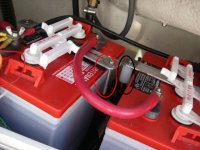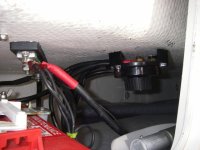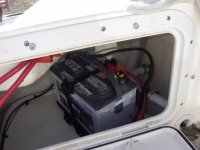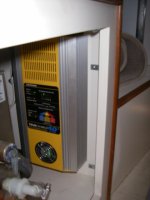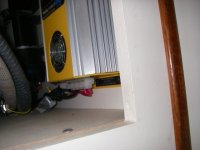Pat Anderson
New member
Our starting battery on Daydream (Optima Blue Top SC34M), which I thought was charged from the indicator light on the on-board Guest charger (5/5 - a definite upgrade project is in order here), did not have enough juice to even lower the outboard, let alone start it...so we depended on our two house batteries (Optima Blue Top SC34DM) for starting and running everything (battery switch to "emergency parallel" position), which was not a problem on an overnighter. I pulled the starting battery and have it on a Schumacher 10 amp charger right now, we'll see in a few hours if it even takes a charge. I don't really have the know-how to load test it if it does take a charge, I guess I could take it to Les Schwab. I am assuming it is toast though.
My topic really is what batteries SHOULD we have? These are the batteries that C-Dory installed when we bought the boat in 2005. I will be kind of disappointed if the starting battery has failed after only two years, but apparently other folks here have had similar experience with these Optima Blue Tops. Here is what the specs are on these batteries - what would others recommend for replacement?
Starting Battery (1)
SC34M - Model SPR, CCA 800, AH 50, RC 110
House Batteries (2)
SC34DM, Model SPR, AH 55, RC 120
It seems we have 110 amp hours in our house batteries, I know you only have a percentage of nominal amp hours, but they have never let us down. But we probably need to replace the starting battery, and who knows how long the house batteries will go? So if you were going to replace these three batteries, what would you go with? We are cruisers, maybe overnight, maybe to Alaska...running GPS, VHF, Wallas, lights, stereo, window fans, Airhead fan, refrigerator, maybe laptop on the inverter, can't afford to have the batteries let us down!
My topic really is what batteries SHOULD we have? These are the batteries that C-Dory installed when we bought the boat in 2005. I will be kind of disappointed if the starting battery has failed after only two years, but apparently other folks here have had similar experience with these Optima Blue Tops. Here is what the specs are on these batteries - what would others recommend for replacement?
Starting Battery (1)
SC34M - Model SPR, CCA 800, AH 50, RC 110
House Batteries (2)
SC34DM, Model SPR, AH 55, RC 120
It seems we have 110 amp hours in our house batteries, I know you only have a percentage of nominal amp hours, but they have never let us down. But we probably need to replace the starting battery, and who knows how long the house batteries will go? So if you were going to replace these three batteries, what would you go with? We are cruisers, maybe overnight, maybe to Alaska...running GPS, VHF, Wallas, lights, stereo, window fans, Airhead fan, refrigerator, maybe laptop on the inverter, can't afford to have the batteries let us down!


